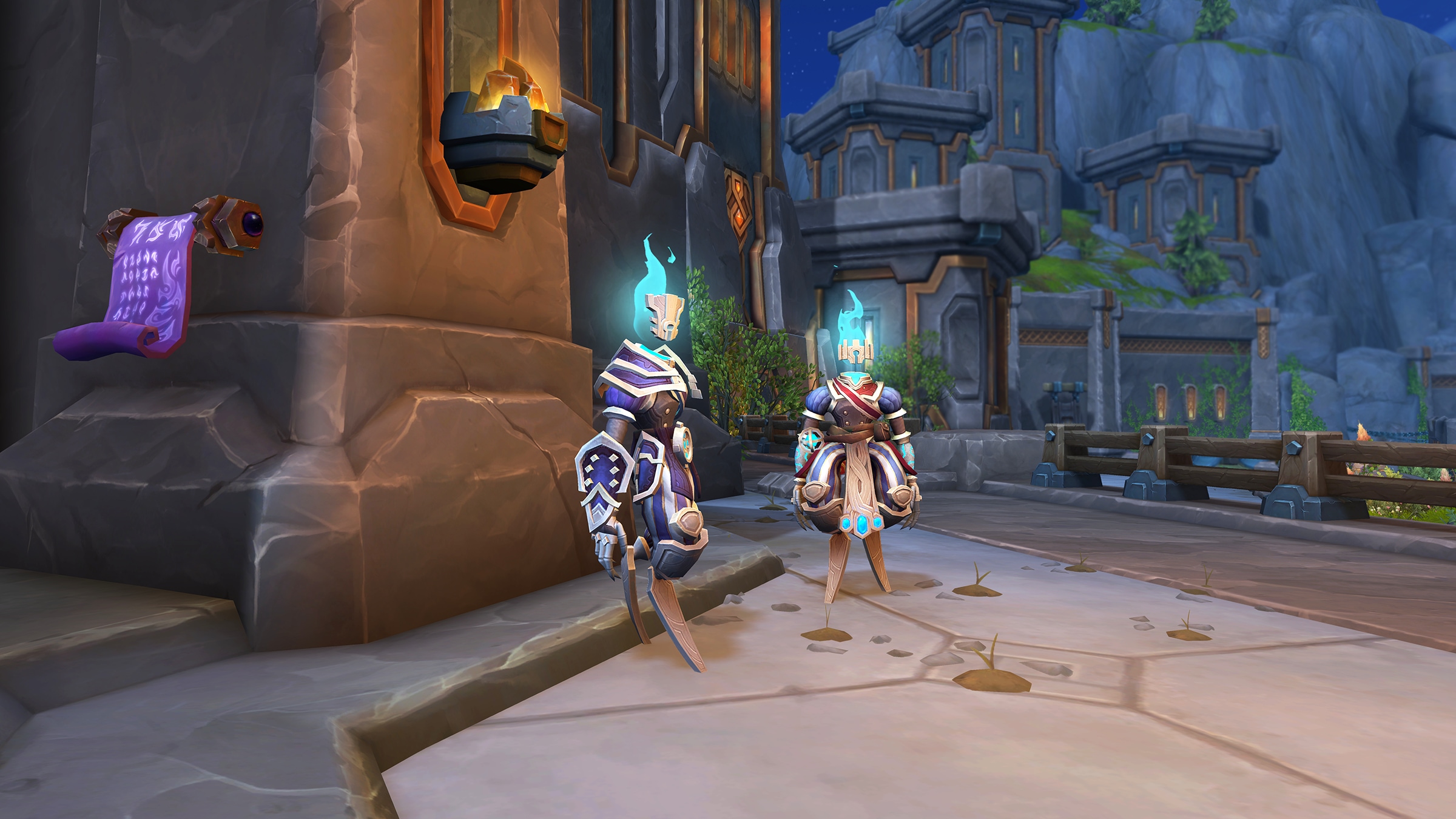THE END OF AN ERA: BLIZZARD’S MIDNIGHT EXPANSION RENDERS CORE COMBAT ADDONS NON-FUNCTIONAL
Popular Now
 FIFA 23
FIFA 23
 Grand Theft Auto V
Grand Theft Auto V
 Auto X Drift Racing 3
Auto X Drift Racing 3
 League of Legends
League of Legends
 Brawl Stars
Brawl Stars
 Garena Free Fire: Kalahari
Garena Free Fire: Kalahari
 CarX Street
CarX Street
 Valorant
Valorant
 The Legend of Zelda
The Legend of Zelda
 EA SPORT FC 25
EA SPORT FC 25 
The landscape of high-end World of Warcraft (WoW) is on the brink of a massive, seismic shift. Blizzard Entertainment has officially confirmed that the upcoming Midnight expansion will introduce sweeping restrictions to the AddOn API, effectively disabling the core functionality of some of the most pervasive and seemingly essential community-created tools in the game’s 20-year history. This includes Deadly Boss Mods (DBM), BigWigs, and key features of WeakAuras, forcing a fundamental re-evaluation of how players approach complex PVE and PVP content. This bold move, which could arrive as early as the Midnight Pre-Patch, stems from a long-standing developer desire to regain control over encounter design and lower the barrier to entry for the general player base, but has been met with significant controversy and player apprehension.
For years, a silent arms race has escalated between Blizzard’s encounter design team and the community’s AddOn developers. Boss mechanics, particularly in Mythic Raid and High-Level Mythic+ Dungeon content, were often trivialized or made significantly easier by real-time combat data scraping. Addons like DBM and BigWigs provided precise, often mandatory, audio and visual cues for abilities, cooldowns, and timers that were arguably not telegraphed clearly enough in the default User Interface (UI). Similarly, WeakAuras allowed players to create custom, highly visible indicators for complex class rotations and critical fight mechanics, turning what should be a reactive skill test into a structured, almost automated, response sequence. Blizzard’s stance is clear: this reliance has made the game’s core challenge contingent on third-party software.
THE MECHANICS OF THE BAN: COMBAT DATA ENTERS A ‘BLACK BOX’
The core of the change in Midnight lies in a dramatic restriction of the AddOn API regarding real-time combat events. Game Director Ion Hazzikostas and UX designer Crash Reed confirmed that any addon attempting to read real-time combat data—such as enemy spell casts, buffs, debuffs, and player cooldown status—will be cut off. The technical implementation involves introducing what developers are calling “secret values” or a “black box” around combat data in instanced content like raids, dungeons, battlegrounds, and arenas. This data will still be visible to the official Blizzard UI, but the API will no longer feed it to third-party addons with the granularity required for complex computational logic.
This technical restriction effectively renders the entire purpose of an addon like Deadly Boss Mods non-functional. DBM and BigWigs rely on reading the combat log to start timers and announce abilities before they happen. By blocking this access, the ability for these addons to provide precise, predictive warnings is eliminated. The creator of Deadly Boss Mods has acknowledged the situation, stating the addon will need to drastically adapt to survive, focusing on the functionality that remains. Meanwhile, the development team behind WeakAuras has been more pessimistic, initially stating that the restrictions were so severe that core functionality—such as using Conditions or Actions based on specific in-combat events—would be impossible, leading to a temporary discontinuation of the retail version of the addon.
 Initial Alpha testing revealed that Blizzard’s initial restrictions were excessively broad, inadvertently breaking benign, non-combat-related tools like Loot Council addons, raid break timers, and general in-instance communication. Blizzard has since eased these restrictions, promising that the “black box” logic will now primarily apply only while a boss encounter or Mythic+ run is actively underway, allowing out-of-combat utilities to continue functioning.
Initial Alpha testing revealed that Blizzard’s initial restrictions were excessively broad, inadvertently breaking benign, non-combat-related tools like Loot Council addons, raid break timers, and general in-instance communication. Blizzard has since eased these restrictions, promising that the “black box” logic will now primarily apply only while a boss encounter or Mythic+ run is actively underway, allowing out-of-combat utilities to continue functioning.
- SEO & High CPC Keywords:
- World of Warcraft Addon Ban
- WoW Midnight Expansion News
- Deadly Boss Mods Disabled
- WeakAuras Update
- Blizzard Addon API Restrictions
- Raid Encounter Design
- Mythic+ Strategy Guide
- WoW Gameplay Changes
- MMORPG UI Customization
BLIZZARD’S RATIONALE: APPROACHABILITY AND REASSERTING DESIGN INTENT
Blizzard’s motivation for this controversial move is twofold, focusing on approachability and design integrity. The developers argue that the mandatory nature of combat addons like DBM has created an unnecessarily high barrier to entry for new and returning players. The community expectation in higher-difficulty content essentially requires players to spend significant time outside the game installing, configuring, and updating a suite of third-party programs just to be competitive.
The second, and arguably more critical, reason is to reassert control over encounter design. When a fight’s complexity is instantly nullified by an addon telling a player exactly what to do and when, the developers are forced to design around the addon, leading to what many see as a vicious cycle of ever-more convoluted and additive mechanics. By disabling these tools, Blizzard intends to shift the focus back to in-game visual cues, auditory feedback, and player awareness, making the difficulty curve more organic and consistent for all players.
In anticipation of the functional vacuum created by the restrictions on addons like Hekili (a rotation helper) and the combat features of WeakAuras, Blizzard is simultaneously rolling out a comprehensive overhaul to class design and the default UI. This includes:
- Enhanced Base UI: Significant improvements to the native UI’s ability to display critical buffs, debuffs, and cooldowns.
- Class Complexity Reduction: An initiative to simplify overly complicated rotations—like the infamous Outlaw Rogue’s Roll the Bones—by making the necessary information for optimal play more visible in the base UI.
- Clearer Mechanics: A promise to design new encounters with far more obvious visual telegraphs for hazardous effects and key abilities, reducing reliance on external timers.
PLAYER REACTION AND THE ROAD AHEAD: CONCERN OVER THE UI GAP
The response from the dedicated WoW community has been a mixture of cautious optimism and profound skepticism. Many players agree with the theoretical goal of making the game more accessible and less dependent on external software. However, there is widespread anxiety that Blizzard’s in-house replacements will not be ready or robust enough to fill the massive functional gap left by two decades of community-developed tools. Veterans, in particular, worry that the removal of highly customizable tools like WeakAuras—which they use not just for combat, but for accessibility and personalized UI organization—will severely degrade their quality of life.
The sentiment is that the core issue has always been Blizzard’s failure to provide adequate default communication for complex mechanics. To many, the addons were not a “crutch” but a necessity to make the game’s high-end content playable. The fear is that the game’s skill ceiling will be lowered and that the experience of high-level raiding and Mythic Plus will become chaotic and unmanageable, especially for roles like healers, who rely heavily on hyper-specific unit frame and status displays provided by now-obsolete addon functionality.
 As the Midnight Alpha and Beta cycles continue, all eyes will be on Blizzard’s iteration and responsiveness. The success of this radical new philosophy hinges entirely on the quality and adaptability of the new native UI tools and whether the next generation of Raid and Dungeon encounters can be genuinely fun and challenging without the guiding hand of the community’s most beloved, and now functionally crippled, combat addons.
As the Midnight Alpha and Beta cycles continue, all eyes will be on Blizzard’s iteration and responsiveness. The success of this radical new philosophy hinges entirely on the quality and adaptability of the new native UI tools and whether the next generation of Raid and Dungeon encounters can be genuinely fun and challenging without the guiding hand of the community’s most beloved, and now functionally crippled, combat addons.
The message to the WoW faithful is clear: prepare for a dramatically different gameplay experience. The days of mandatory DBM downloads for an entry-level raid may be over, but the challenge of mastering Azeroth’s new threats is about to become a test of raw in-game awareness, unassisted by the computational precision that has defined high-end play for so long. The future of the WoW API is one of strict constraints, pushing the game back toward its core principles of visual and auditory feedback, and betting that a clean slate is the best way forward for the next 20 years of the Massively Multiplayer Online Role-Playing Game (MMORPG) titan.








